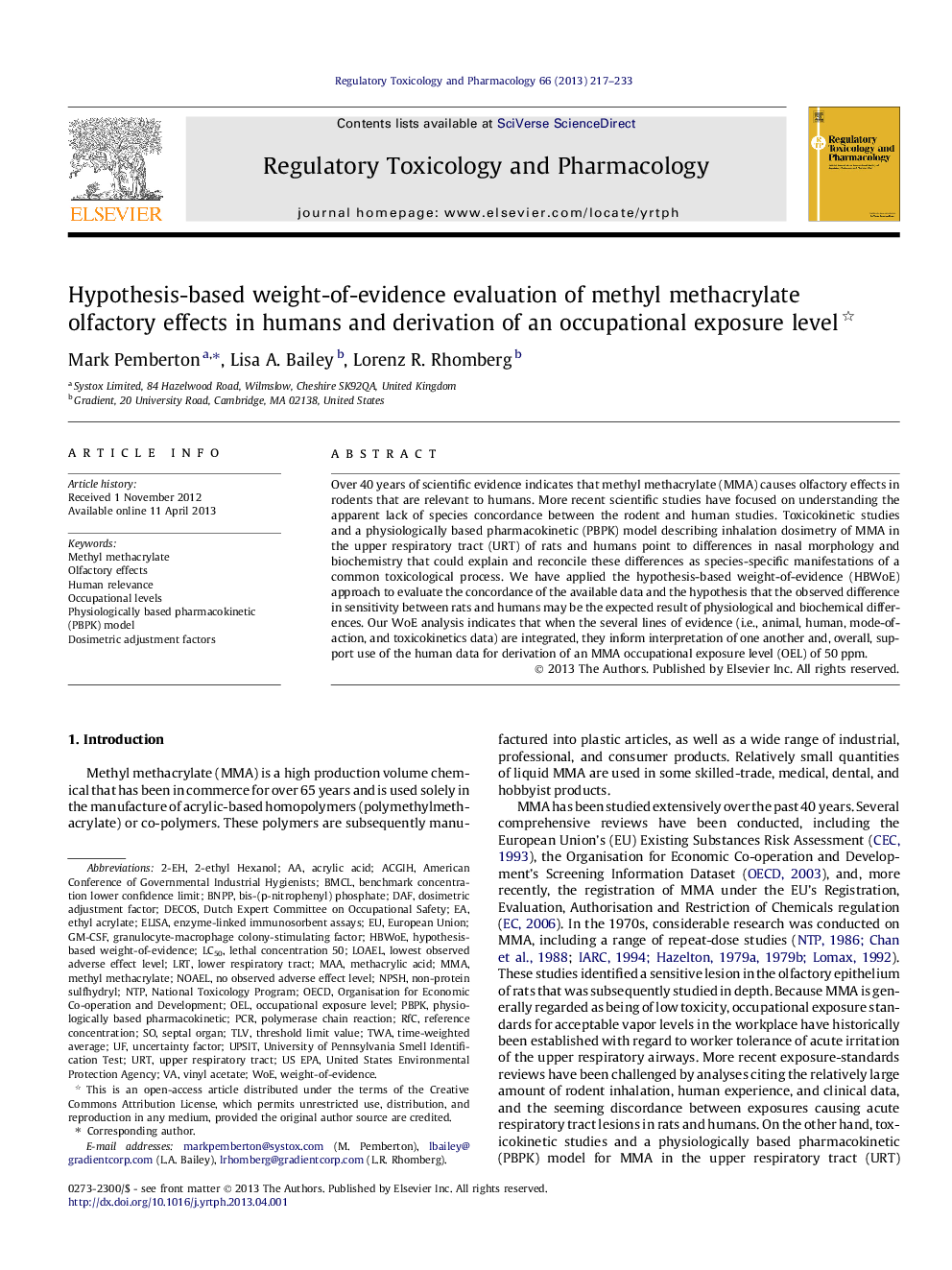| Article ID | Journal | Published Year | Pages | File Type |
|---|---|---|---|---|
| 5857423 | Regulatory Toxicology and Pharmacology | 2013 | 17 Pages |
Abstract
Over 40Â years of scientific evidence indicates that methyl methacrylate (MMA) causes olfactory effects in rodents that are relevant to humans. More recent scientific studies have focused on understanding the apparent lack of species concordance between the rodent and human studies. Toxicokinetic studies and a physiologically based pharmacokinetic (PBPK) model describing inhalation dosimetry of MMA in the upper respiratory tract (URT) of rats and humans point to differences in nasal morphology and biochemistry that could explain and reconcile these differences as species-specific manifestations of a common toxicological process. We have applied the hypothesis-based weight-of-evidence (HBWoE) approach to evaluate the concordance of the available data and the hypothesis that the observed difference in sensitivity between rats and humans may be the expected result of physiological and biochemical differences. Our WoE analysis indicates that when the several lines of evidence (i.e., animal, human, mode-of-action, and toxicokinetics data) are integrated, they inform interpretation of one another and, overall, support use of the human data for derivation of an MMA occupational exposure level (OEL) of 50Â ppm.
Keywords
BMCLBNPPOELNOAELSeptal organLOAELACGIHLRTNPSHURTWOEMAAGM-CSFRFCTLVMMAOECDNon-protein sulfhydryl2-Ethyl hexanolTWALC50DAFPBPKNTPUS EPAUPSITenzyme-linked immunosorbent assaysUnited States Environmental Protection AgencyEuropean UnionEthyl acrylateMethacrylic acidAcrylic acidNational Toxicology ProgramELISAUniversity of Pennsylvania Smell Identification TestUpper respiratory tractLower respiratory tractHuman relevanceOrganisation for Economic Co-operation and Developmentgranulocyte-macrophage colony-stimulating factorUncertainty factorReference concentrationLethal concentration 50Physiologically based pharmacokineticMethyl methacrylatePhysiologically based pharmacokinetic (PBPK) modelThreshold limit valuetime-weighted averageNo observed adverse effect levelpolymerase chain reactionPCRWeight-of-evidenceVinyl acetateLowest observed adverse effect levelAmerican Conference of Governmental Industrial Hygienists
Related Topics
Life Sciences
Environmental Science
Health, Toxicology and Mutagenesis
Authors
Mark Pemberton, Lisa A. Bailey, Lorenz R. Rhomberg,
